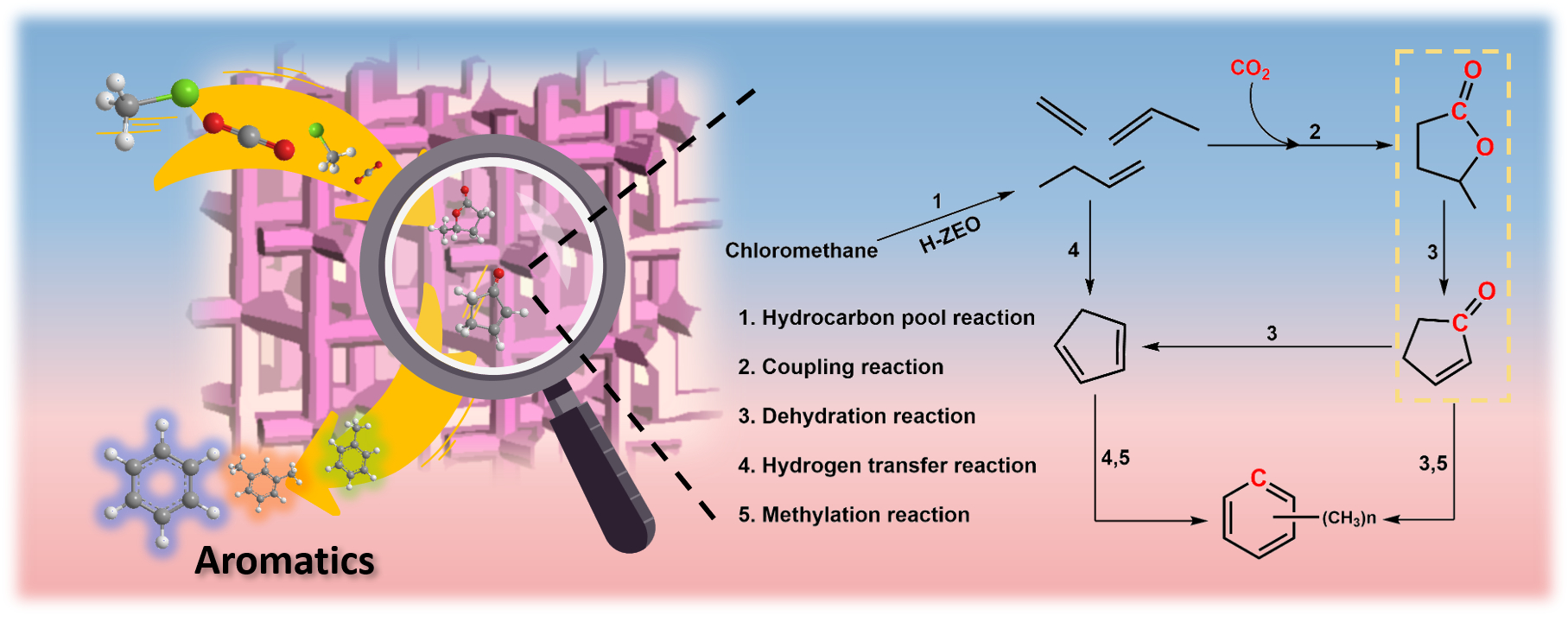CO2and CH4are not only greenhouse gases but also important C1 resources, which are mainly converted to syngas via dry reforming. However, the high temperature (>800°C) is required due to the high thermodynamic stability of CO2and CH4. Methyl halide can be transformed into high-value chemicals under mild conditions, significantly reducing the difficulty of CH4conversion. Moreover, introducing hydrogen-deficient (e.g. CO2) into the hydrogen-rich chloromethane conversion system can effectively adjust the C/H balance between reactants and products. Nevertheless, whether CO2can directly incorporate into target product remains a critical issue to be addressed in this process.
Recently, a research team led by Prof. LIU Zhongmin and Prof. ZHU Wenliang from the Dalian Institute of Chemical Physics (DICP) of the Chinese Academy of Sciences (CAS) developed a high carbon utilization for CO2conversion with chloromethane to aromatics using acidic zeolites as the catalyst.

High carbon utilization for CO2conversion with chloromethane to aromatics over acidic zeolite catalyst (Image by FANG Xudong)
The researchers developed a high carbon utilization for CO2conversion with chloromethane to aromatics using acidic zeolites as catalysts. They first demonstrated that introducing CO2into CH3Cl system not only promoted the conversion of chloromethane but also enhance aromatics formation, particularly benzene, toluene, and xylene (BTX). Specifically, the high aromatic selectivity and BTX selectivity reaching 71% and 50% could be obtained over H-ZSM-5 under 3.0 MPa and 450°C.
Through in-situ infrared spectroscopy, isotope tracing, and other characterization techniques, they discussed the reaction mechanism and demonstrated the direct involvement of CO2in the formation of aromatics. Furthermore, by capturing key intermediates, they confirmed that lactone, cyclopentenone, and cycloalkenes are crucial intermediate species in the coupled conversion of chloromethane and CO2, and proposed the coupling reaction mechanism.
“Our study would provide a new approach for the large-scale and high-value utilization of methane and CO2, with promising prospects.”
The study was supported by the National Natural Science Foundation of China, the Strategic Priority Research Program of CAS, the Dalian High-Level Talent Innovation Support Program, and National Special Support Program for High-Level Talents. (Text by FANG Xudong and LIU Hongchao)
Key words:CO2utilization; CH4conversion; CH3Cl; Aromatics; Lactone; Acidic zeolites;
High carbon utilization for CO2conversion with chloromethane to aromatics over acidic zeolite catalyst. Xudong Fang, Bin Li, Hongchao Liu*, Mingguan Xie, Zhiyang Chen, Leilei Yang, Jingfeng Han, Wenliang Zhu*, Zhongmin Liu, Chem Catalysis, 2023.